Virtual power plants are making behind-the-meter storage more attractive to utilities.
Residential energy storage adoption is growing in the Northeast, and no state mandates are behind the rising numbers. Surprisingly, utilities are the ones encouraging customers to get batteries and enroll them in virtual power plants (VPPs). Instead of being threatened by customer-sited renewable energy systems, VPPs make solar and storage an agreeable resource for utilities.
The U.S. electric grid has long performed as a one-way street: Utilities supply power to customers but never demand power from customers. That’s why residential solar has always been an obstacle for utilities — they aren’t asking for peak solar power generation at noon when they still have to fire up fossil fuel generators to meet peak demand at 6 p.m.
Only the addition of batteries allows customer-sited solar to become a dispatchable resource utilities can work with — if they have access to it through groups of distributed, behind-the-meter batteries known as VPPs.
“Now the utility can say, ‘We need those batteries to discharge between 5 and 8 p.m. on Thursday when we anticipate a spike in demand.’ If they feel they can have some degree of control, then that goes a long way toward helping them feel better about storage behind the meter,” said Todd Olinsky-Paul, senior project director for Clean Energy Group (CEG).
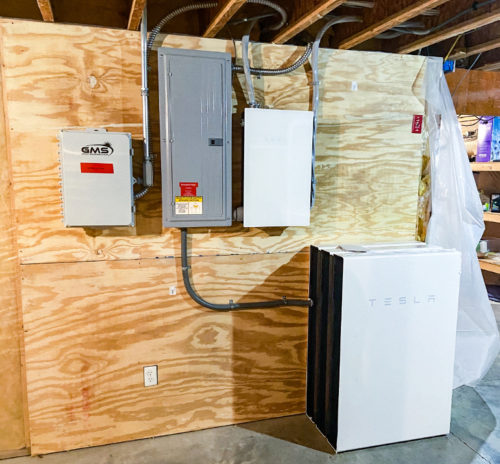
A Tesla Powerwall installation performed by Green Mountain Solar that is enrolled in a VPP in Vermont.
CEG recently released a report on energy storage policy best practices throughout New England and found that hitting battery deployment targets isn’t the best use of resources. Although renewable portfolio standards require certain amounts of solar and wind be added to the grid, batteries must be incentivized with purpose. For example, the Clean Peak Energy Standard in Massachusetts requires utilities to provide clean peaking resources, which then makes all those residential batteries more attractive.
“What’s going to make the difference is the virtual power plant. Utilities will start to figure out they can use these customer resources rather than just be at the mercy of the resources,” Olinsky-Paul said.
If utilities and grid-operators are open to VPPs, they’re often a win-win on both sides of the electric line. Utilities get access to thousands of mini power plants and clean energy without building their own substations, and customers get extra benefits from their emergency backup resources.
And the Northeast is a shining example right now for how virtual power plants can work for all parties.
“The Northeast is one of the most receptive areas [to VPPs]. They have stable foundational solar policy and they’ve layered storage incentives and storage grid service programs. When you put that all together, it’s a very sympathetic place to do business,” said Chris Rauscher, senior director of market development and policy for Sunrun, a national installer seeking out VPP programs.
Utilities find VPP benefits
Some utilities in the Northeast have established VPP programs. Three utilities (Eversource, National Grid, Cape Light Compact) working in Connecticut, Massachusetts and Rhode Island have combined forces under the ConnectedSolutions program to pay customers annual incentives to access behind-the-meter stored energy. The program is set up as a bring-your-own-device (BYOD) design, and payout is determined by the brand of battery and how much it is used.
Vermont utility Green Mountain Power (GMP) has also started a BYOD program, but it really put itself on the map in 2017 as the first utility in the country to partner specifically with Tesla to use customer Powerwalls in a VPP. GMP’s use of 3,000 Powerwalls installed in customers’ homes, along with utility-scale batteries, resulted in more than $3 million in reduced grid and electricity costs for customers in 2020.
“Storage is one of the most important things that we can do as we tackle climate change and also work to increase resiliency for our customers and lower costs. Storage is like a Swiss Army knife when it comes to all the different benefits it can deliver,” said Kristin Carlson, VP of strategy and external relations at GMP. “That’s why GMP was the first to deliver a Powerwall program to our customers several years ago. Virtual power plants are a key part of how we move into the future.”
GMP is a relatively small utility — it serves approximately 266,000 customers across Vermont. But those customers are GMP’s “North Star,” said Carlson, and every program the utility develops is to help customers save money and find electricity resiliency.
“We don’t start a program thinking we’re going to revolutionize the utility world. We start a program because we think it’s going to benefit a homeowner or a renter, someone who gets power from us in Vermont,” she said. “That’s our focus, but there is an imperative for utilities to act and to act quickly given what we’re facing with climate change and cost pressures.”
GMP’s small size allows it to quickly implement new, aggressive programs. The success of the first Powerwall program led to the BYOD offering, which includes up to $10,500 toward a home battery purchase in addition to usage payments. Carlson said other utilities have reached out asking for advice in starting their own VPP programs.
“Our focus is always Vermont and our customers, but while we’re here doing the work, we’re hearing from utilities across the country who want to learn more about what we’re doing and how it’s working,” she said. “GMP has a strong culture of innovation and a strong customer culture focus. We just deploy the programs and start doing it because we realize there’s no time to waste. We hope that we can be a resource to other folks who have questions.”
Solar installers rethink their approach
National residential solar installer Sunrun sees energy storage as an obvious business path to follow, and its policy team is actively working throughout the country to get VPPs adopted.
“You really can’t talk about storage without talking about solar. Solar is the engine of storage,” Rauscher said. “Something like 95% of residential batteries that are installed today are paired with solar.”
Rauscher said he and his Sunrun policy team are generally surprised at policymakers’ easy acceptance of energy storage. After mostly experiencing pushback when promoting solar policy, Sunrun comes ready to fight for batteries. Instead, policymakers and utilities bring their own questions that demonstrate an immediate understanding of the technology’s benefits.
“We thought we were going to be in a position where we try to convince them of the benefits of having aggregated distributed batteries on the [grid] system,” he said. “It’s incredible how quickly this progressed. We’re not facing skeptical regulators or utilities and telling them they should have batteries on the grid. It’s more like, what size, where, what function, how are they compensated?”
Sunrun and other installers and third-party aggregators can then do the work to connect utilities with residential batteries through VPP programs. For example, Sunrun is working in the Northeast to bundle 300 of its Brightbox residential battery systems to deliver power when called upon by New York utility Orange & Rockland Utilities (O&R). Sunrun simplifies things on both sides — utilities only have to work with one aggregator, and customers don’t have to go searching for incentives. Through this O&R partnership, Sunrun dispatches power to the utility when it’s needed most, and Sunrun customers initially receive a discounted battery for joining the VPP and then earn compensation for participating.
“The average middle-class busy family is not going to enroll their Powerwall or LG battery into a VPP and manage it and make sure it always has the right state of charge and then seek payment,” Rauscher said. “So, we do all of that for the customer. Oftentimes the customer will not even know that the battery is being operated in real time for VPPs. But they will appreciate when they get a cash card or some other incentive from us at the end of the year.”
That extra compensation for helping to green the grid isn’t yet a driving force for residential battery adoption. Emergency backup is still the primary reason consumers invest in storage, but utility incentives can be a bonus for those considering their options.
“I wouldn’t say that the average consumer is coming to us and saying they want to be part of a virtual power plant,” Rauscher said. “But that’s the gap we’re trying to bridge — that gap between the consumer education and what the utility and the market operator needs. A customer will come to us and be interested in resilient solar and batteries and that value proposition, and then we’ll be able to sweeten the deal by enrolling that customer’s system into a VPP, sharing the revenue and bringing down the cost.”
Battery adoption is rising across the country, fueled by customer interest in emergency backup, and the Northeast is one of the first regions to cooperatively get energy storage to work on both sides of the meter.
“Utilities, by and large, are fairly conservative by nature, but they still need to look ahead. I think they see the writing on the wall. Storage is not going to go away,” Olinsky-Paul said. “Utilities see this coming and that they’re going to have to deal with it. Some will deal with it by resisting as long as they can, and others are trying to get ahead and incorporate it into their portfolios.”

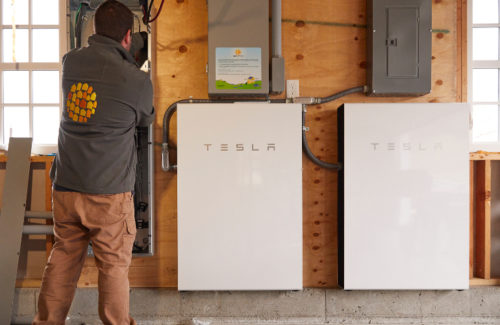
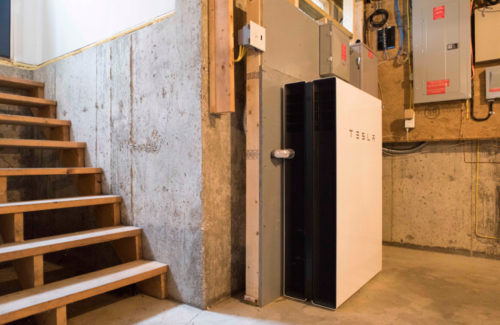
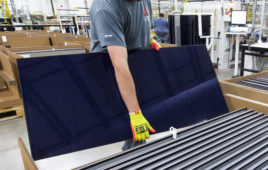

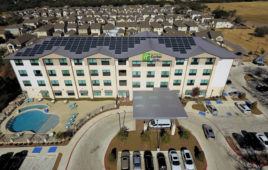

“The U.S. electric grid has long performed as a one-way street: Utilities supply power to customers but never demand power from customers. That’s why residential solar has always been an obstacle for utilities — they aren’t asking for peak solar power generation at noon when they still have to fire up fossil fuel generators to meet peak demand at 6 p.m..
This is too often the “excuse” used, the reality IS that these same rote IOU electric utilities also have the option of analyzing and installing energy storage along the grid both locally and regionally. NOT ONE utility has had the foresight to install several GWh of redox flow battery energy storage to meet from after hours to dispatchable demand after the solar PV generation day is done. Instead of depending on fueled generation for capacity, they need to capture and store over generation from wind or solar PV then time shift to later in the day and at night.
““Utilities, by and large, are fairly conservative by nature, but they still need to look ahead. I think they see the writing on the wall. Storage is not going to go away,” Olinsky-Paul said. “Utilities see this coming and that they’re going to have to deal with it. Some will deal with it by resisting as long as they can, and others are trying to get ahead and incorporate it into their portfolios.””
That vaunted utility “death spiral” gets steeper for those who try the low hanging fruit of excuses and recriminations against solar PV adopters. The moving target is at least 25% more energy available than the grid’s peak demand at any time of the day or night.
Very nice article! I have only one small amendment: you say our report found that “hitting battery deployment targets isn’t the best use of resources.” I would rephrase that to say that incentivizing battery deployment alone is less effective than incentivizing battery services that support state clean energy goals, such as reduced peak demand, better integration of solar generation, increased grid resiliency, and reduced air emissions. Incentivizing deployment may result in many various uses of storage, while incentivizing useful services aligns battery storage with state policy.
We do not want to discourage states from setting storage targets – but we do want to encourage states to better align storage incentives with policy goals.